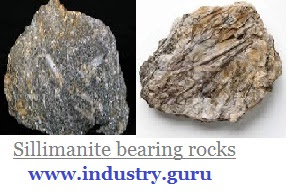30-April-2021
First
let us refresh our knowledge a little bit about Slag Cement and how it differs
from Portland Cement.
Slag
cement can be used in concrete, either as a separate cementitious component or
as part of a portland
cement concrete. Slag Cement works synergistically with portland cement to
increase strength, reduce permeability, improve resistance to chemical attack
and inhibit rebar corrosion. When used as part of a portland cement concrete,
slag reacts with both the water (latent hydraulic reaction) and the hydrated
cement paste (pozzolanic reaction), resulting in a more refined microstructure
than that of a plain portland cement.
However,
there are some disadvantages of Blast Furnace Slag Cement Its initial strength
is low, because of which it cannot be used in RCC works. As the initial setting
time of Blast Furnace Slag Cement is high, this cement is not used for
emergency or repair works as well.
The
Slag Cement Association (SCA) is a nonprofit trade association representing
producers and shippers of slag cement in the United States. Since 2010,
been running its annual slag cement project of the year awards program. The
slag cement awards recognize projects for excellence and innovation in concrete
using slag cement.
SCA has recently announced the recipients of its 2020
Slag Cement Project of the Year Awards. Sixteen construction projects from
across the United States were chosen to showcase the broad applications of slag
cement and its impact on creating more durable and sustainable concrete.
In
the architectural category, Lehigh Hanson used slag cement in the construction of
a new four-story parking garage at the Chesapeake Beach Resort & Spa to allow an
additional 700 vehicles to park on the resort’s premises. The other winning
project in this category, slag cement was used for durability enhancement and
potential sulfate and alkali silica reaction (ASR) mitigation by St. Marys Cement in the
construction of Adventure Cove at the Columbus Zoo and Aquarium in Ohio.
Lehigh
Hanson also won in the sustainability category for using slag cement in the
construction of the 72-story One Manhattan Square residential building at the foot
of the Manhattan Bridge in New
York City.
The
awards for innovative application has been given to LafargeHolicm for
the replacement of a 323 m (1060-ft) superstructure above the historic Lake Tillery Bridge in the Piedmont area of North
Carolina. Slag cement was used in the deck placements of the bridge to increase
durability and to mitigate against alkali silica reaction (ASR) in the
concrete. In addition, slag cement helped with holding the slump longer and
increased the workability of the mixture to help the finishers battle the
strong heat during the placements. Argos was also awarded for its work on the Nucor Steel of Florida project where slag cement
helped exceed the specified compressive strength of 4000 pounds per square inch
(psi) in 28 days in a 50 percent replacement mixture with 245 kg (540 lbs) of
cementitious material and with a 0.49 maximum water-cementitious materials
ratio (w/cm). Lasty, St. Mary’s Cement was recognized for the Pittsfield Charter Township Planning Commission Development,
a large residential project which included apartments, rowhouses, mixed-use
commercial buildings, and stormwater retention buildings. Up to 35 percent slag
cement was used in the concrete mixture design for its workability, increased
control of curing and hydration cycles, and long-term durability benefits.
The
remaining SCA winners include:
Durability
- Akron Hazel Storage Basin (CSO Rack 10 & 11)—Lehigh
Hanson;
- CVST River Bridge—Lehigh Hanson;
- Lakeland Linder – Site Prep for Intermodal
Center—Argos; and
- Upper Sandusky Water Reclamation Facility—St. Marys
Cement.
High
Performance
- Avon Park Air Force Range – Juliet Ramp & Airfield
Pavements—Argos;
- Jamestown
Municipal Airport Runway and Taxiway Paving Project—LafargeHolcim;
- Kew Gardens Interchange—Lehigh Hanson; and
- Potomac River Bridge/I-81 Widening and Replacement—LafargeHolcim.
Green
Design
- The Blonde Apartments at 8th and Main—Skyway Cement Company;
and
- The Lumen at Playhouse Square—LafargeHolcim.
Besides,
there are two 2020 Slag Cement Research Award Winners:
- Sustainability of Concrete in the
Pacific Northwest—Hilary Chaimov, Oregon State University; and
- Innovative Application of Slag in
Improving Sustainability, Flexibility, and Cost in Thin Panels—Arash
Rahmatian, University of Houston-Downtown
(Source: Slag Cement Association News; edited)











